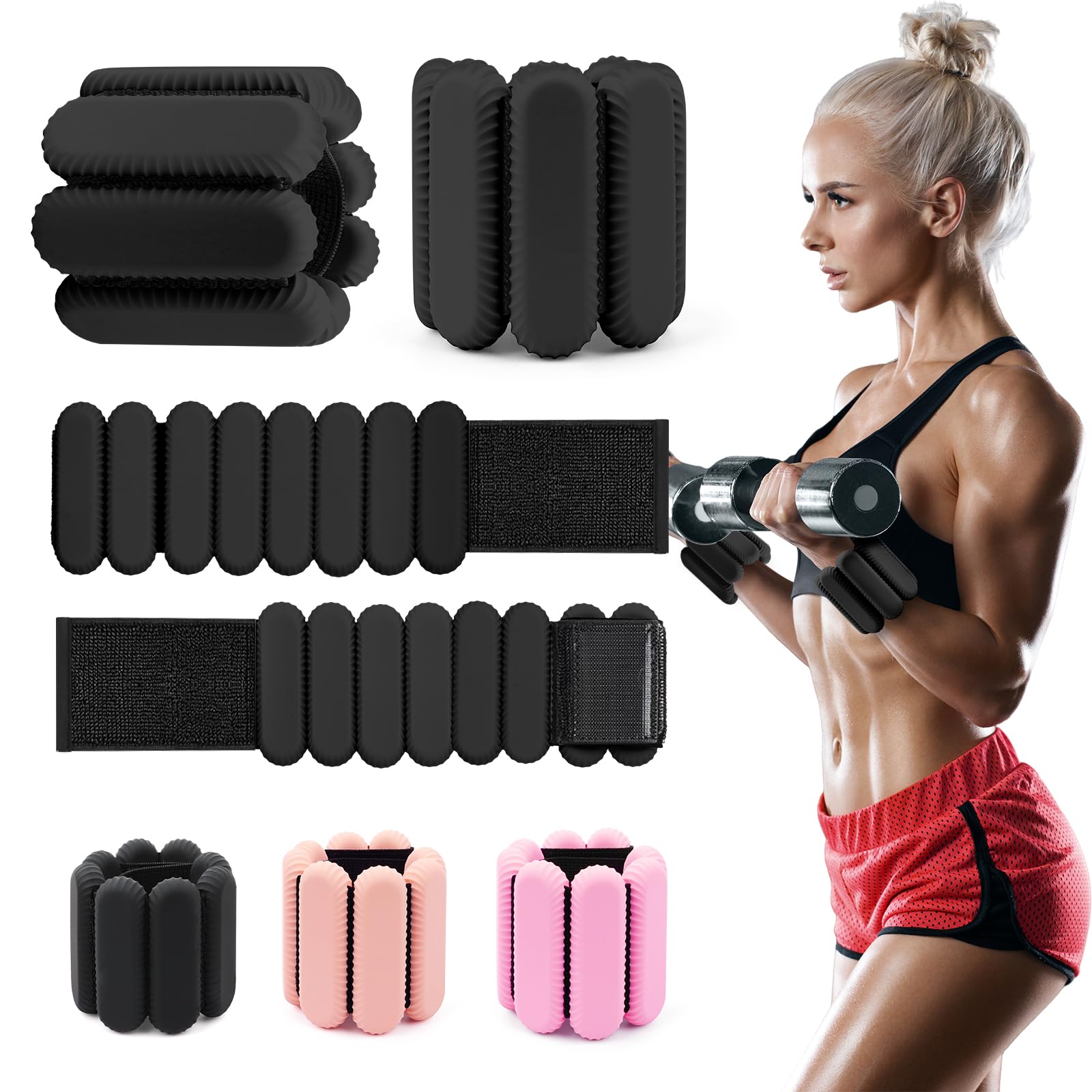You’re walking through the park, arms swinging naturally, when you realize your shoulders feel weak during simple tasks. Or maybe you struggle with balance during yoga poses that require leg control. Adding wrist and ankle weight exercises to your routine transforms these everyday movements into targeted strength builders—but only if done correctly. These compact resistance tools amplify muscle engagement throughout your full range of motion, turning a basic walk or stretch into a powerhouse workout. Yet 73% of beginners skip critical safety steps, leading to joint strain or imbalances that derail progress.
This isn’t about strapping on heavy weights and hoping for results. It’s about strategic resistance that respects your body’s biomechanics. For a 165-pound person, each arm naturally weighs 10 pounds and each leg 16.5 pounds—adding even small external loads significantly increases stress on joints. Done right, wrist and ankle weight exercises boost oxygen consumption by 5-10% and heart rate by 5-10 BPM, mimicking higher-intensity workouts with lower impact. You’ll discover exactly how to select equipment, perform injury-proof movements, and integrate them into your existing routine for visible strength gains in just weeks.
Why Exceeding 1-Pound Limits Causes Wrist and Ankle Injuries
Your limbs act as long levers that magnify force on joints—making proper weight selection non-negotiable. Start with 1-pound weights for both wrists and ankles regardless of your current strength level. This isn’t a limitation; it’s physics. The average arm represents 6.5% of total body weight, so adding 2 pounds creates disproportionate stress on shoulders and elbows during overhead motions.
The 1-Pound Safety Protocol Every Beginner Must Follow
Never increase beyond 1-pound increments until you can perform 15 perfect repetitions without fatigue compromising form. Stop immediately if you experience:
– Numbness or tingling in fingers or toes (nerve compression warning)
– Joint clicking during movement (indicating misalignment)
– Sharp pain that worsens with repetition (tissue damage signal)
Maximum daily usage should stay under 30 minutes initially. Overloading causes micro-tears in tendons that accumulate into chronic injuries like rotator cuff strain or Achilles tendinitis.
5 Health Conditions That Require Skipping Wrist and Ankle Weights
Avoid these exercises entirely if you have:
1. Recent upper/lower body injuries (weights disrupt healing tissue)
2. Chronic elbow or shoulder pain (added resistance inflames joints)
3. Balance disorders (altered gait increases fall risk)
4. Pregnancy (shifts center of gravity dangerously)
5. Over 20 pounds overweight (excess load on already stressed joints)
Consult your physician if recovering from surgery or managing arthritis. Your safety hinges on respecting these boundaries before your first workout.
How to Choose Wrist and Ankle Weights That Actually Stay in Place
:max_bytes(150000):strip_icc()/vwt-ankle-weights-july-24-test-cuff-original-adjustable-wrist-jjuliao-6958-75b3689160e940dbbd281e48fff51578.jpeg)
Most beginners grab mismatched weights that slip during movement, forcing constant readjustment that ruins form. Ankle weights are too bulky for wrists (causing rotation), while wrist weights lack sufficient resistance for legs.
The Snug-Fit Test for Injury-Proof Equipment
Secure weights with adjustable Velcro straps that pass the “jump test”: Stand on one foot and jump 3 times. If the weight shifts more than 1 inch, it’s too loose. Proper fit means:
– No circulation cuts (fingers/toes stay warm and pink)
– Zero slippage during burpees or high knees
– Comfortable movement through full range of motion
Start with 1-pound neoprene-covered weights for both limbs. Upgrade only to 2-pound options after 4 weeks of flawless form. For sweaty sessions, add thin wrist guards under straps to prevent chafing.
3 Shoulder-Sculpting Wrist Weight Exercises That Beat Dumbbells
Wrist weights outperform dumbbells for shoulder endurance by eliminating grip fatigue. They target stabilizer muscles through the entire motion arc—critical for posture and injury prevention.
Ballet Arms Flow for Rotator Cuff Strength
Stand with heels touching in a “V” stance, arms at sides. Slowly raise arms to shoulder height with palms facing your chest, fingertips nearly touching. Extend arms outward while squeezing shoulder blades, then return to center. Perform 12 controlled reps. This movement builds the often-neglected rear deltoids that prevent rounded shoulders. Pro tip: Add a 2-second pulse at full extension to ignite micro-fibers.
Punch-Pause Combos for Explosive Power
Assume a fighter’s stance with knees bent. Throw alternating straight punches, pausing for 3 seconds at full extension. The wrist weights create resistance on both the punch and retraction phases. Do 30 seconds on/30 seconds off for 5 rounds. You’ll feel serratus anterior activation (key for scapular stability) within minutes. Stop if shoulders creep toward ears—this strains cervical nerves.
Core-Blowing Ankle Weight Exercises for Stronger Legs and Abs
Ankle weights transform basic bodyweight moves into core-integrating challenges by leveraging leg leverage. Unlike weighted vests, they force anti-rotation stability from your entire kinetic chain.
Weighted Leg Circles for Hip Stability
Lie on your side with ankle weights secured. Lift your top leg 6 inches, then draw 10 slow clockwise circles (pinky-toe leading). Switch directions for 10 counterclockwise circles. This targets the gluteus medius—the muscle that prevents knee collapse during squats. Critical cue: Press your bottom hip into the floor to avoid cheating with momentum. Perform 2 sets per side.
Elevated Back Extensions for Spinal Armor
Place your thighs on a bench with ankles hanging off, weights secured. Cross arms behind your head and lift your chest while squeezing glutes. Hold for 3 seconds at the top. The ankle weights dramatically increase erector spinae engagement versus bodyweight-only versions. Do 15 reps with 90 seconds rest. Skip if you feel lower back pinching—this indicates poor pelvic alignment.
The Strip Set Method: Advanced Wrist Weight Technique for Muscle Growth

This pro technique pushes muscles beyond normal failure by layering resistance. It’s ideal for shoulder sculpting when time is limited.
How to Execute Strip Sets Safely
- Perform side lateral raises with 3-pound dumbbells plus 1-pound wrist weights to failure (≈12 reps)
- Immediately drop dumbbells but keep wrist weights
- Continue raises until true failure (≈8 more reps)
The wrist weights sustain tension as fast-twitch fibers fatigue, recruiting deeper muscle layers. Never exceed 2 strip sets per session—this method generates intense metabolic stress requiring 72 hours recovery.
3 Ways to Integrate Wrist and Ankle Weight Exercises Into Your Daily Routine
Forget “extra” workout time—strategically layer these into existing habits for compound results.
The Walking Power-Up Hack
Add 1-pound ankle weights to your daily 20-minute walk. Research shows this creates equivalent cardiovascular demand to running at 5 mph but with 40% less joint impact. Key timing: Wear weights only during the second half of your walk when muscles are warm. Remove before downhill sections to protect knees. Expect heart rate elevation of 8-10 BPM—track this as your progression metric.
Studio Class Amplifier
During fitness classes (like Pilates or dance), use wrist weights only during sculpting segments—not cardio blasts. They add resistance to arm circles and overhead motions without grip fatigue. Warning: Never wear during high-impact jumps; the added momentum stresses ankle ligaments.
Travel Strength Saver
Pack 1-pound weights in your carry-on for hotel room workouts. Pair with bodyweight squats: Perform 10 squats with arms extended overhead (wrist weights), then 10 sumo squats with arms wide (ankle weights). This 8-minute routine maintains muscle engagement better than cardio-only travel workouts.
Injury Prevention: Daily Habits for Safe Wrist and Ankle Weight Training
Most injuries stem from skipping prehab, not the exercises themselves. Dedicate 5 minutes pre-workout to joint priming.
The 3-Minute Shoulder Prehab Sequence
- Arm circles: 30 seconds forward/backward with no weights
- Doorway pec stretch: 45 seconds per side
- Banded pull-aparts: 2 sets of 15 with resistance band
This combats internal shoulder rotation caused by daily sitting. Post-workout, ice shoulders for 10 minutes if they feel “overworked”—a precursor to tendinitis.
When to Stop Immediately (Before Damage Occurs)
Discontinue exercises if you experience:
– Muscle soreness lasting beyond 48 hours
– Joint stiffness the next morning
– Any deviation from pain-free movement
Your form threshold is absolute: If you can’t maintain perfect technique for the last 3 reps, reduce weight immediately.
Maximize Results: When to Use Wrist and Ankle Weight Exercises for Best Outcomes
Timing determines whether these tools boost progress or cause setbacks. Never use them during high-impact activities like jumping rope—the added momentum strains connective tissue.
The Optimal Weekly Schedule
- Mondays/Thursdays: Ankle weights during strength sessions (leg day)
- Tuesdays/Fridays: Wrist weights during cardio cool-downs
- Wednesdays/Saturdays: Rest or unweighted mobility work
- Sundays: Active recovery (walking without weights)
Track heart rate elevation during wrist weight use—aim for consistent 5-10 BPM increases as your fitness improves. This measurable metric beats guessing based on perceived effort.
Key takeaway: Wrist and ankle weight exercises deliver remarkable strength and endurance gains when treated as precision tools—not shortcuts. Start with 1-pound weights for 20-minute sessions twice weekly, prioritizing flawless form over duration. Within 5 weeks, you’ll notice firmer shoulders, stabler hips, and easier performance in daily movements like carrying groceries or climbing stairs. Remember: The goal isn’t how much weight you can strap on, but how perfectly you can move with it. Your joints will stay healthy for decades of active living when you honor these science-backed protocols.





